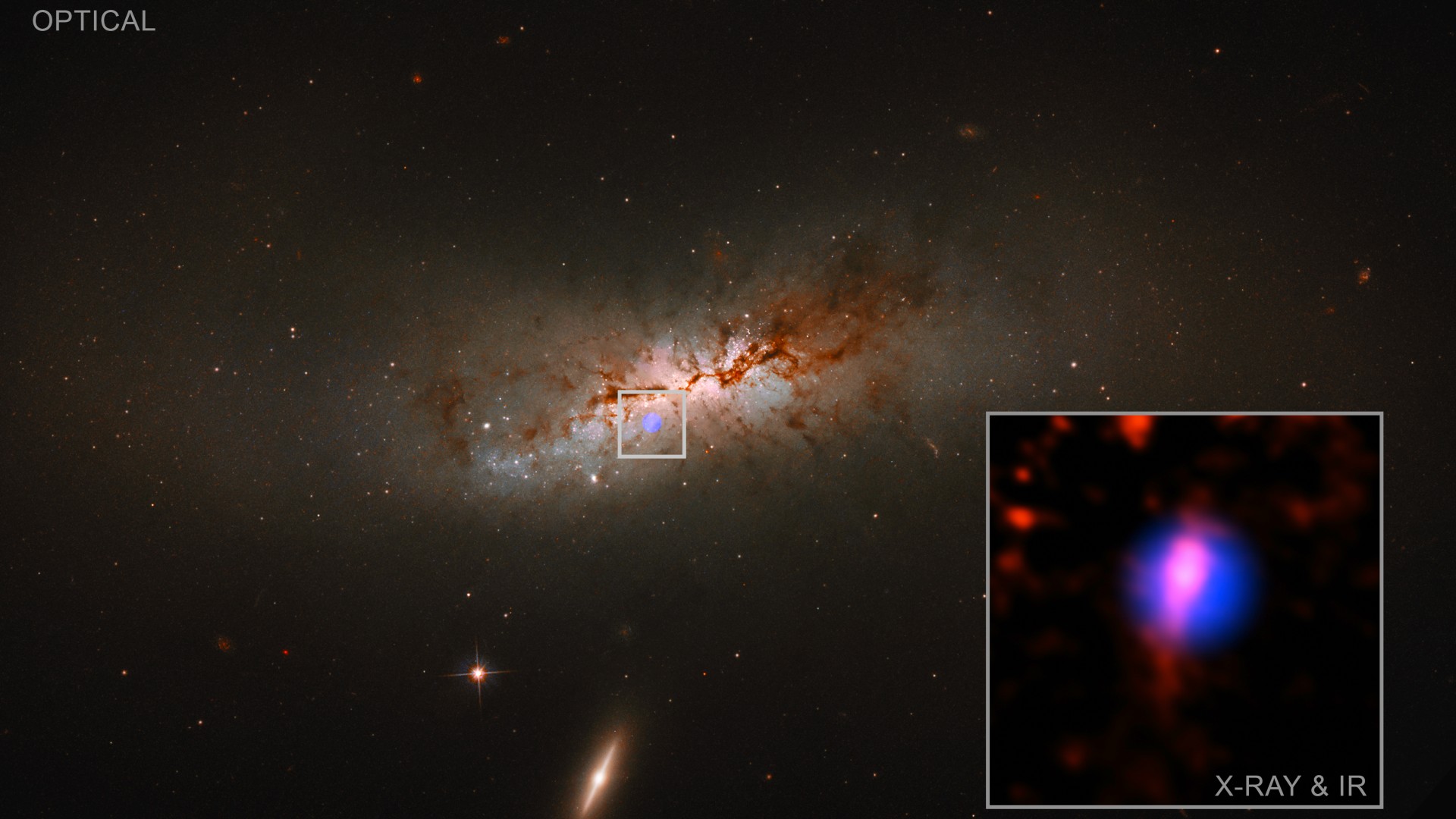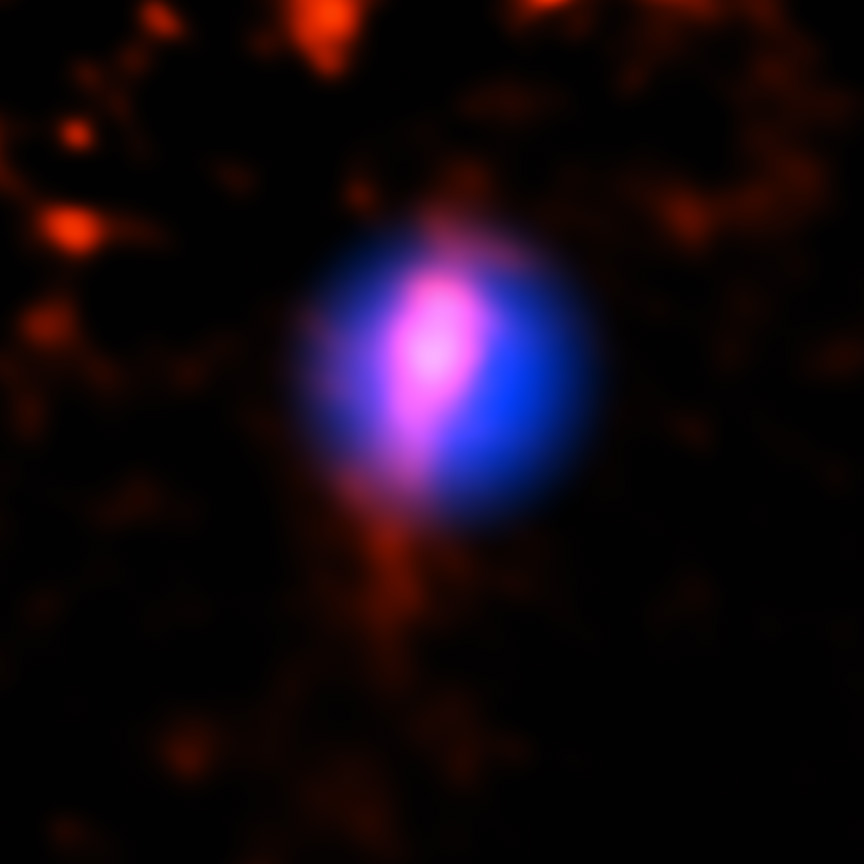Galaxy's violent destruction acted as 'black hole delivery service'
A small galaxy swallowed by a larger spiral galaxy deposited a supermassive black hole as it was violently ripped apart and consumed.

The absorption of a small galaxy into a larger spiral galaxy seems to have acted as a 'black hole delivery system' leaving a distant galaxy with two supermassive black holes that will eventually collide.
A team of astronomers used the Hubble Space Telescope and the Chandra X-ray Observatory to observe the spiral galaxy NGC 4424 , located 54 million light-years away in the Virgo galactic cluster, and identify an elongated red object as a small cluster of stars.
The team nicknamed the star cluster 'Nikhull' — a word taken from the Sumi language related to the Tulini festive period of celebrating and wishing for a rich harvest — and thinks that it was once the nucleus of a small galaxy that collided with NGC 4424 and had most of its stars violently ripped away.
Related: Colliding black holes could clock universe's expansion rate
As Nikhull was stretched out by the gravitational forces of NGC 4424 it deposited a supermassive black hole that once sat at the center of the consumed galaxy. It now lurks about 1,300 light-years from the center of the spiral galaxy. This is a distance 20 times closer than Earth is to Sagittarius A* (Sgr A*), the supermassive black hole at the center of the Milky Way.
The process is referred to by the astronomers as "black hole seeding by capture and sinking." It could give scientists a better picture of how both galaxies and the supermassive black holes at their hearts grow.
The 45,000 light-year-wide main image of NGC 4424 was captured by Hubble and shows the galaxy in optical light. At the center of NGC 4424 is the galaxy's own supermassive black hole which is estimated to have a mass equivalent to between 60,000 to 100,000 suns. In addition to this central black hole, the spiral galaxy is thought to house millions of stellar mass black holes with masses between five and 30 times that of the sun.
Get the Space.com Newsletter
Breaking space news, the latest updates on rocket launches, skywatching events and more!

The close-up image of NGC 4424 is about 1,700 light-years wide and is made up of X-ray data which was captured by Chandra, and infrared light seen by Hubble. Seen in blue, the X-rays observed by Chandra are likely caused by material slowly being fed to a supermassive black hole within the star cluster.
The team estimates that this supermassive black hole has a mass of between 40,000 and 150,000 times that of the sun. They also suggest that Nikhull's progenitor galaxy may have acted as a delivery system for some of NGC 4424's other smaller black holes.
Eventually, the two supermassive black holes of NGC 4424 should move together with Nikhuli's supermassive black hole settling into an orbit around the native and central supermassive black hole.
The distance between the pair of black holes will shrink as gravitational waves carry energy away from the system. This should lead to a collision with the two supermassive black holes merging to create an even more massive black hole.
A paper detailing the team's findings has been published in The Astrophysical Journal.
Follow us on Twitter @Spacedotcom or on Facebook.
Join our Space Forums to keep talking space on the latest missions, night sky and more! And if you have a news tip, correction or comment, let us know at: community@space.com.

Robert Lea is a science journalist in the U.K. whose articles have been published in Physics World, New Scientist, Astronomy Magazine, All About Space, Newsweek and ZME Science. He also writes about science communication for Elsevier and the European Journal of Physics. Rob holds a bachelor of science degree in physics and astronomy from the U.K.’s Open University. Follow him on Twitter @sciencef1rst.









